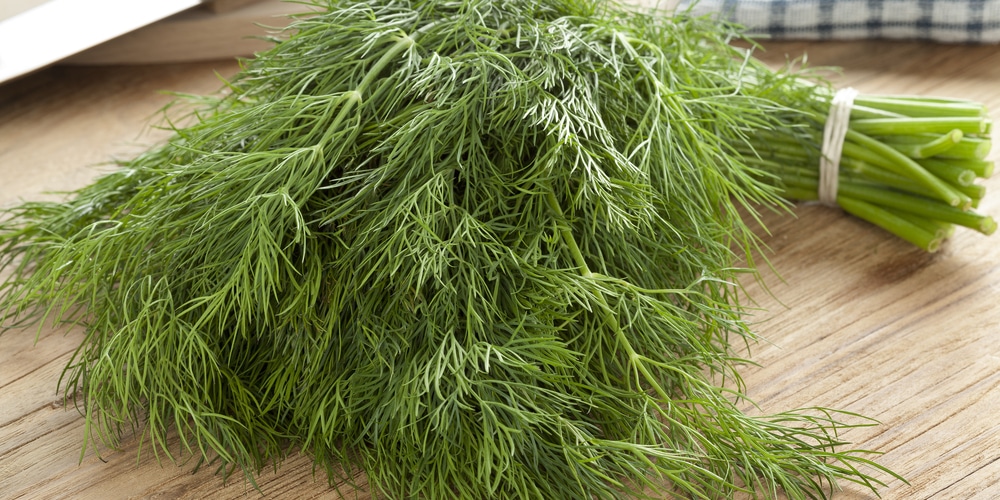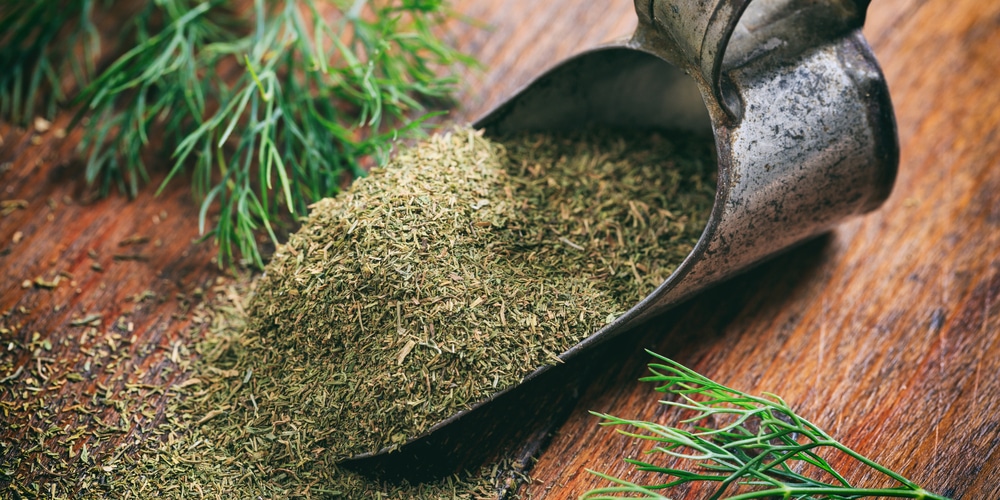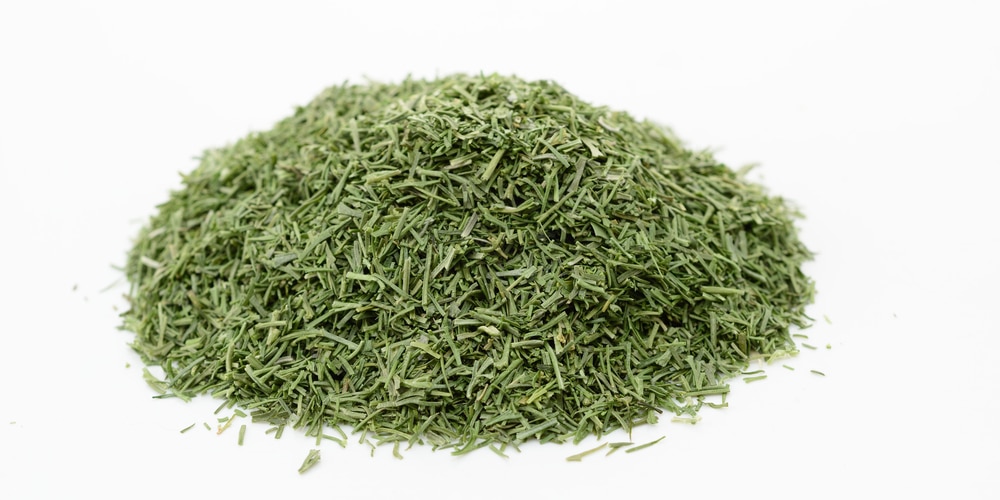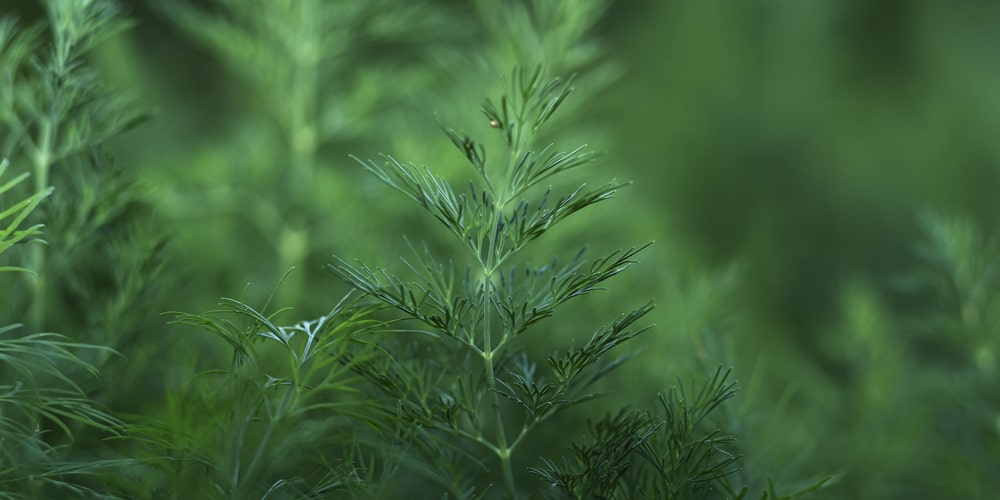If you have dill weeds growing in your yard, you may be wondering whether you can use them for cooking. Are dill weeds the same as dried dill? There isn’t any difference between dried dill that you buy in the store and dill weeds that often spring up in your yard. These two terms refer to the same plant, which means you can use the dill weeds from your garden to add flavor to many dishes.
Dill leaves and seeds can be used in cooking and are commonly used worldwide, especially in European countries such as Scandinavia and Germany. Let’s look at how to use dill weeds or dried dill.
What is Dill Weed?

Dill weed originates from Russia and is also found throughout Western Europe. It’s used in various savory dishes, including pasta, sauces, and salads. There are also recipes dating back to 17th century Europe when dill was combined with cucumber to create a version of dill pickles that later became very popular.
Dill is very popular with seafood and tastes excellent alongside salmon. It can also be added to white sauce, eaten with eggs, and flavor potato salad. It’s also added to ranch dressing in the states.
Dill leaves can be used either fresh or dried. They belong to the same herb family as many common herbs such as caraway, anise, fennel, and cumin. Dill has a slightly buttery taste and also tastes grassy. Hints of lemon and anise are often tasted in the herb. Dill weeds can be harvested from your garden throughout the growing season, from spring to early summer.
As the weather gets hot in the summer, the plant will bolt, causing it to get leggy and bitter. Dill weed will then produce flowers and then seeds. The seeds are spicy and can be added to dishes to add a bit of a kick. The plant’s seeds taste very different from the leaves and are often compared to caraway. Dill seeds have a stronger flavor and are also slightly bitter than dill weed leaves or dried dill. For this reason, they should not be substituted for one another.
Dill is a delicate herb that shouldn’t be overlooked. You can add dill leaves or seeds to your cooking towards the end. This will help to preserve the herb’s delicious taste and aroma.
The Benefits of Adding Dill to Your Diet
Dill is beneficial to health and can be used to treat a variety of conditions. It’s believed the herb can help soothe stomach problems and is excellent for calming babies with colic.
Dill is also proven to have antibacterial properties and is a natural way to freshen your breath. You can chew on some dill seeds as a natural, sugar-free breath freshener.
Nursing mothers can also use dill as it can help to stimulate milk production. The herb is also packed full of vitamins and minerals, particularly vitamin C. Eating a small amount of dill leaf or dried dill sprinkled on your food will provide you with approximately 10% of the recommended daily vitamin C intake.
Dill can also provide health benefits for those with high cholesterol or blood sugar as it can help lower these levels.
Fun Facts About Dill Weed
Dill has been used for centuries worldwide, and some countries have superstitions and interesting uses for the herb. In ancient Rome, dill was considered a good luck symbol, much like today’s four-leaf clover. Dill was said to bring good luck and fortune.
In Ancient Egypt, dill was used as an aphrodisiac. It was also said to scare away witches. While in ancient Greece, people saw dill as a symbol of wealth, and those who had it growing near their homes were expected to prosper.
In some cultures, dill flowers are used to decorate wedding venues and are added to bouquets carried by the bride. The flowers are said to offer protection and will also bring future wealth, luck, good fortune, and happiness to the home. They were also believed to bring passion to the marriage.
Some people also like to have dill flowers in their home to encourage harmony and happiness.
How to Harvest and Store Fresh Dill Weed
If you have dill weed in your garden, you can harvest it using a knife or pair of scissors. Cut off a few leaves and then leave the rest of the plant to continue growing. Ensure you make a clean cut when collecting leaves. The leaves can then be washed and cut up to be used for cooking.
Dill leaves are best collected fresh for each recipe. However, you can also keep dill weed for a day or two after harvesting. Wrap the doll in plastic wrap and keep it in the fridge. Dill that has been kept too long will wilt and become mushy.
If you’re looking to extend the life of your dill, you can place the stems in a glass of water and keep them in the fridge. You’ll be able to keep dill for about a week using this method.
If you often use dill in your cooking, you may like to freeze some at the beginning of summer before the plant goes to flower and becomes bitter. To do so, you’ll need to chop the leaves finely or use a food processor to pulverize. Add some water to form a paste. The paste can then be put into an ice cube tray and frozen. Once the paste is totally frozen, you can remove the ice cubes and keep them in a freezer-proof bag until you need to use them. Here are the best practices when harvesting dill.
Conclusion
Dill weed is the same as dried dill, and both are commonly used in cooking around the world. If you’ve got dill weed growing in your garden, you can try adding some chopped leaves to white sauce, potato salad, or salmon dishes. Dill flowers can be used to decorate your home and bring good luck at weddings.


